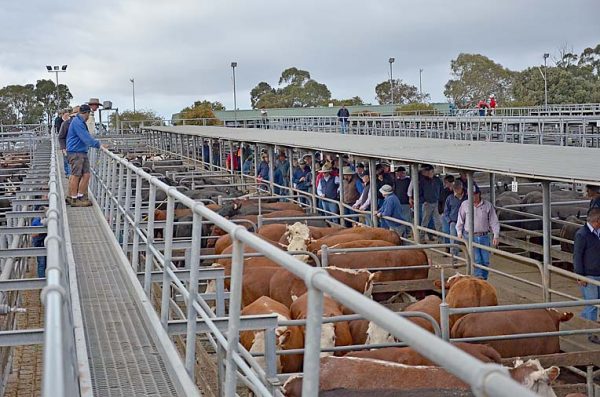

GRANT District Council will sweep in a number of accounting measures for the Glenburnie Saleyards following a detailed report from an independent auditor.
This follows questions being raised by councillors regarding the financial sustainability of the livestock exchange given its reserve account had a deficit of $989,000 at June 30, 2017.
But the key report has revealed ratepayers have not been subsidising the major facility between July 2000 and 2017.
However, the document warned council could not assume that “moving forward” that this would continue to be the status quo.
At council’s recent meeting, elected members voted that staff must report quarterly to council on the facility’s financial position, changes in equity and cash flows.
All internal financial reporting and budget for the saleyards will also be presented in accordance with the South Australian Local Government financial statements model format.
This is expected to ensure a “reliable and consistent” reporting framework.
Financial operations of the livestock exchange will be reported as a separate function of council to ensure consistency and local government current practice.
The local government body will also undertake a risk review and sensitivity analysis on the key assumptions and financial drivers of the saleyards master plan.
According to the report authored by Dean Newbery and Partners Chartered Accountants partner Jim Keogh, council could be satisfied that the “overall operations” had not be subsidised by ratepayers between July 1, 2000, and June 30, 2017.
“In calling for this review, council is to be commended, given the pattern of small operating losses emerging in recent years,” Mr Keogh said.
“With an updated financial reporting framework in place for the saleyards, council will be better placed to make well informed decisions, in particular regarding ongoing operations at the saleyards.”
The report’s author regarded the overall cash deficit of $106,000 incurred by the operations of the saleyards as “insignificant” for the 17 year period due to $5m being spend on capital assets.
“To further enhance the critical review and testing of key assumptions used in the saleyards master plan, a risk review and sensitivity analysis on the key assumptions and financial drivers must be regularly undertaken and appropriate mitigating controls implemented to monitor and manage risks,” Mr Keogh said.
He reported this review had provided the opportunity to canvass the accounting policies and practices surrounding the internal financial reporting of the saleyards operations.
“I am pleased that council’s administration have embraced the need to change and update the financial reporting framework for the saleyards,” Mr Keogh said.
“My review has confirmed that the saleyards have been operating on an overall profitable basis since July 1, 2000 – but in recent financial years, a pattern of small operating losses has emerged.
“I have also concluded that the saleyards has virtually ‘broken even’ in terms of its overall cash transactions over the 17 year review period.”
Mr Keogh said changes in the market had led to declining numbers of livestock sold through the saleyards, resulting in operating losses in five of the most recent seven financial years.
“Council has been increasingly concerned with the operations of the saleyards and also the question of the extent of recent losses and whether ratepayers have been subsidising the financial operations of the saleyards,” he said.
“Over the 17 years, ratepayers have not been financially subsidising the operations of the saleyards, but that may not be the case moving forward.”







